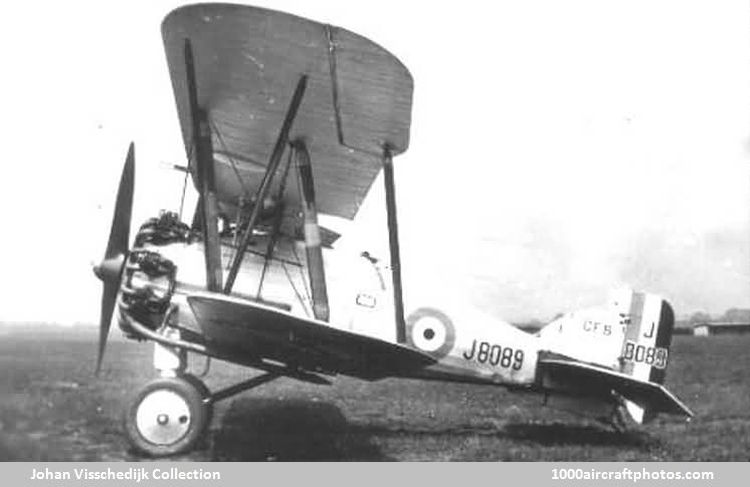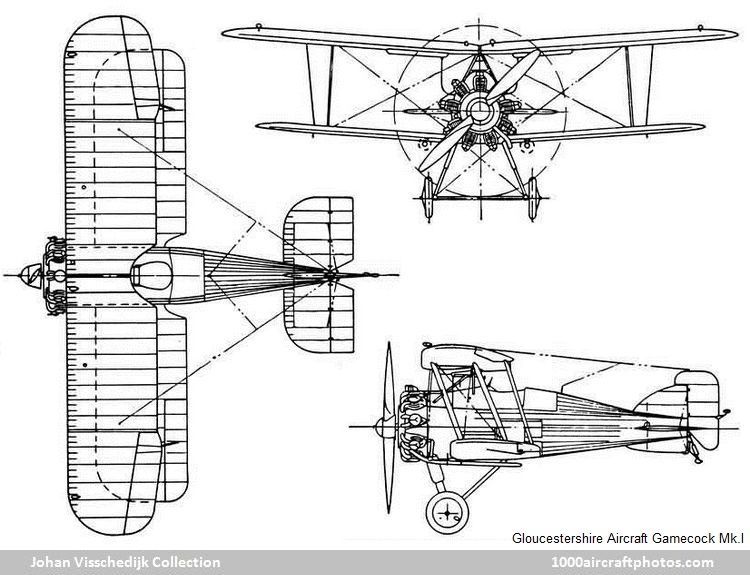In the following September, an initial order was placed on behalf of the RAF for 30 Gamecock Mk.Is powered by the 425 hp Jupiter VI. In the event, a further 60 Gamecock Mk.Is were built for the RAF in 1925-1927), one of these (unofficially known as the Gamecock Mk.III) at one time flying with a lengthened fuselage, new and enlarged fin-and-rudder assembly and narrow-chord ailerons.
A developed version, the Gamecock Mk.II, with a steel-tube upper wing center section, narrow-chord ailerons and a larger rudder, appeared in 1928. This was adopted by Finland, two pattern aircraft and a manufacturing license being acquired. Fifteen Gamecock Mk.IIs were built for the Finnish air arm 1929-1930 by the State Aircraft Factory (Valtion Lentokonetehdas), these having the lengthened fuselage tested earlier in the UK by the so-called Gamecock Mk.III and being powered initially by the 420 hp Gnome & Rhône Jupiter 9Ab or 9Ak and later by the 480 hp Jupiter 9Ag (license-built Bristol Jupiter IV engines).
The pictured aircraft was assigned to the No. 3 Flying Training School. On Wednesday March 25, 1931, Captain Kitrell took off from RAF Station Grantham, Lincolnshire, England, but allowed the aircraft to swing to the right, a tire burst due to excessive strain, and the aircraft overturned.
The last Gamecock Mk.Is were withdrawn from first-line RAF service mid-1931, Gamecock Mk.IIs remaining first-line Finnish equipment until 1935. The following data relate to the Gamecock Mk.I."

